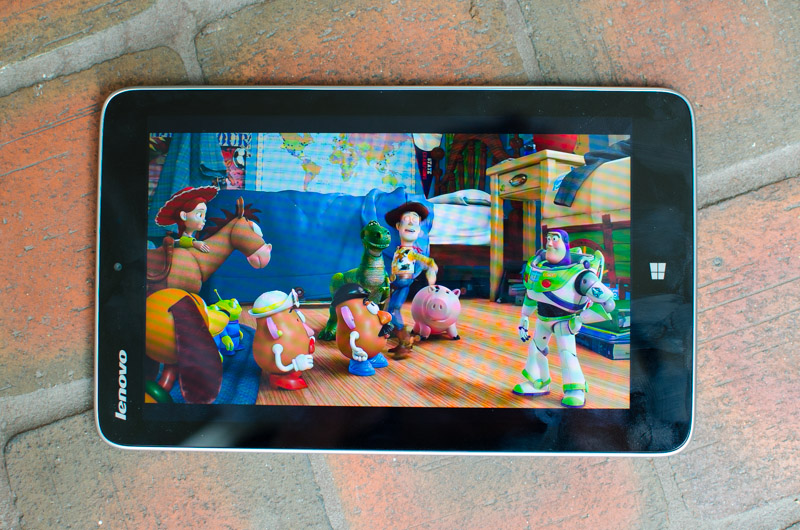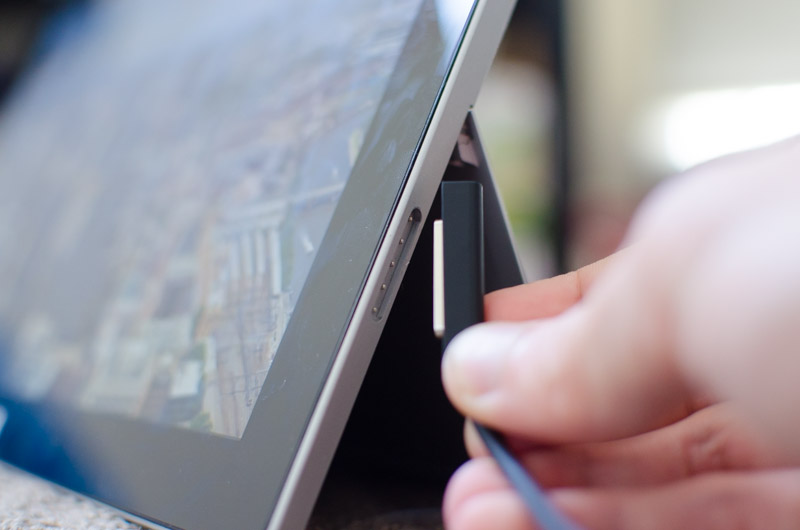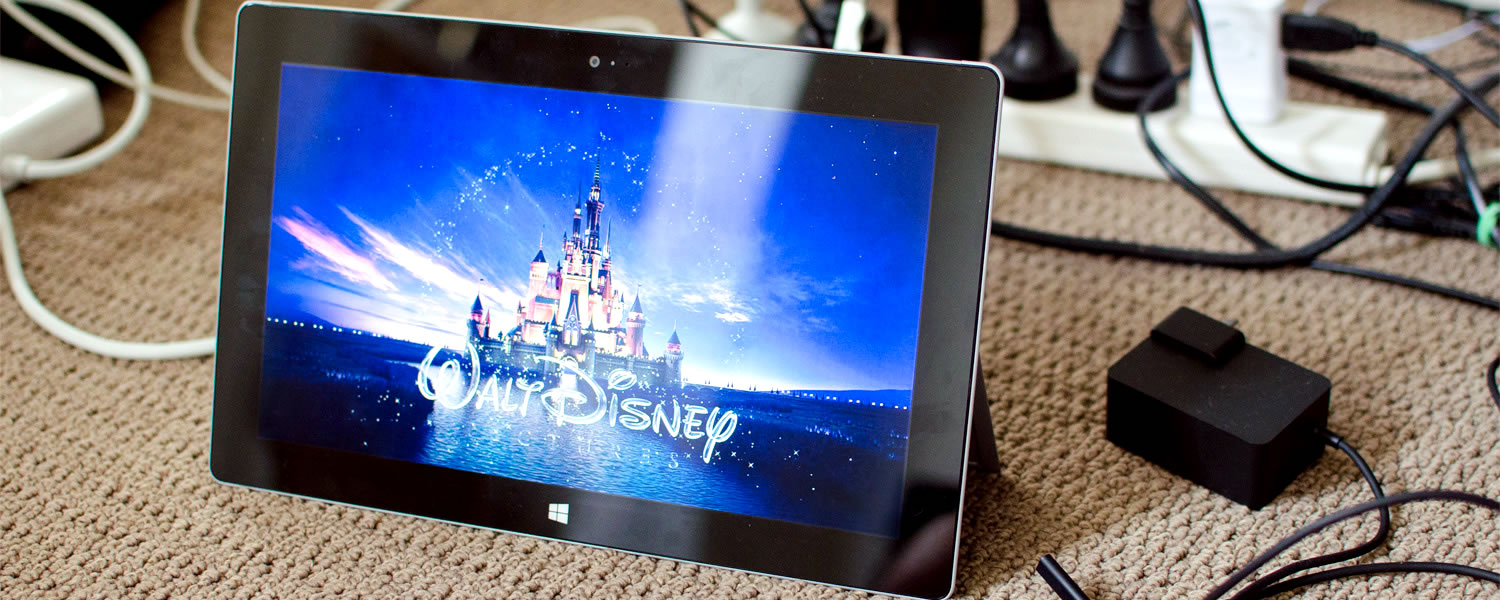Battery life is a critical aspect to consider when purchasing a new portable device. Hardware companies are targeting efficiency more than ever, and while battery life has certainly improved in recent years, there's always more that can be done.
Video playback is one common case scenario where efficiency is crucial and where a lengthy battery life is an infrequently found godsend. Hopping on an intercontinental flight and wanting to catch up on Game of Thrones? The number of episodes you can watch is going to be dictated by your laptop or tablet's battery life, and of course, settings like screen brightness and background tasks.
But what you may not realize is that the video player itself, and the format your videos are encoded in, can also have an impact on battery life consumption. Or do they?

Over the course of the last two weeks, I've been digging deep into what the optimal playback setup is for lengthening battery life. Throughout more than 145 hours of testing, I've looked at a range of Windows video players, including the stock Windows 8 app, Windows Media Player, VLC and MPC-HC, plus many encoding formats such as H.264, Xvid, and the all-new HEVC format.
This article won't give you a rundown of every possible playback combination on every hardware platform - testing this would take far too long to be reasonable - but the results compiled so far are certainly enlightening.
Testing Video Players
Before we looked at video formats, we need to establish which video player is the most efficient. I chose some of the most popular Windows apps for the desktop and for the Modern/Metro interface. But first, it's worth discussing hardware.
Our primary testbed was a Lenovo Miix 2 8 tablet based on Intel's 'Bay Trail' Atom platform. We're talking about a 1.33 GHz quad-core Z3740 SoC with a 667 MHz Intel HD Graphics GPU, WXGA display and 2 GB of RAM, with the all-important capability of hardware accelerated H.264 decoding.
An Acer Ivy Bridge-based laptop was used as a secondary testing machine. The Aspire Timeline U M3-581TG has dual-core Core i7-3517U CPU clocked at 1.90 GHz with an Intel HD Graphics 4000 GPU (the dedicated Nvidia graphics were disabled for testing), 4 GB of RAM and a WXGA display. At this stage I've only tested on Intel-based x86-64 hardware, but I may follow up this article by testing on ARM devices if readers show interest.

Ideally I would have tested on Haswell hardware as well, but a Surface 2 Pro that I requested didn't arrive in time for publishing. Haswell's newer architecture is inherently more efficient than Ivy Bridge, although both chips are produced using a 22nm process and Haswell only has a small real-world performance advantage. I wouldn't expect results to change much if we had tested Haswell.
The stock Windows 8 Videos app is the first video player we tested with. This is the default app that launches when you open many video types in the latest Windows revision, such as MP4. It's a Metro-interface app with a limited feature set and limited format support, but it often gets the job done with little fuss. For those less Metro inclined, Windows Media Player is the default application for media playback in Windows, which was also tested throughout.
Choosing a third party video player wasn't too difficult, VLC is arguably the most popular of the bunch and is available in both desktop and Metro iterations. The VLC Metro app is relatively new, and even without looking at battery life data, it isn't an app I would personally recommend as it only has a small subset of the desktop app's features. It does boast support for a huge range of formats just like its desktop counterpart, but at this stage it's premature and very buggy.
The desktop VLC app is a fantastic video player with a strong feature set. It's known for its wide format compatibility and ease of use, making it the go-to video player for a large percentage of Windows users. By default, VLC doesn't offload video processing to the GPU, but it can be enabled in the settings with ease (unlike the Metro app, which doesn't use hardware acceleration at all). I tested VLC with hardware acceleration both enabled and disabled.

I also tested VLC's main, but lesser known competitor, Media Player Classic - Home Cinema (more commonly known as MPC-HC). In the enthusiast community MPC-HC is known for its flexibility, reliability and (again) wide format support. MPC-HC hardware accelerates by default, and I only tested the software with default settings.
The final app I tested with is CyberLink's Power Media Player (formerly PowerDVD Mobile), the third Metro app and the only one that's paid ($15 in the Windows Store). Power Media Player has a somewhat weak feature set, but it's less buggy than VLC Metro and has a wider range of formats supported. Critically, it supports Windows RT, making it one of the few apps for the platform that allows you to play MKV files, for example.
Hardware configurations were identical between tests: both the Acer Timeline M3 and the Lenovo Miix 2 8 were run at 75% brightness, in airplane mode, and with the video running fullscreen. The battery was charged fully to 100% between runs, and run to 0% while playing a loop of a sample video. The sample video in question is the same I use for all our mobile reviews' battery rundown tests: a Blu-ray rip of Toy Story 3 encoded in the most popular format, H.264, with a resolution of 1280 x 720, 6-channel AAC audio and an average bitrate of 2.5 Mbps.
If you were skeptical about the impact software could have on media playback and battery life, this is going to be an eye opener.

Immediately noticeable on the graph above is the wide gap between the most and least efficient video players. Between the Windows 8 Videos app and VLC for Windows 8, there's more than three and a half hours of battery life when playing the same video; in other words, the Videos app will last 60% longer.
It's pretty surprising just how efficient Microsoft's Metro UI video player is. Compared to its desktop equivalent, Windows Media Player, the Videos app lasted 20% longer. And Windows Media Player performs quite well, benchmarking as the most efficient desktop player.
If you're looking for a video player laden with extra features, it will cost you battery life. VLC is comparably inefficient as a video player, delivering 30% less stamina than the Videos app (with hardware acceleration enabled) and MPC-HC doesn't perform much better (27% less stamina). The Miix 2 8 lasted 3 hours less when playing videos through VLC. It's also interesting to note that when hardware acceleration is enabled, VLC lasts 13% longer than with it disabled.

Testing on an Ivy Bridge system gave similar results. The Videos app was 75% more efficient in our testing than VLC with hardware acceleration disabled, and 49% more efficient than Windows Media Player, presenting an even greater advantage to Microsoft's Metro UI app than on Bay Trail. It goes to show the strides Microsoft has made to optimize Windows 8's Metro apps, even if only a share of users truly appreciate them.
Except for hardware accelerated VLC and MPC-HC, which switch places, all video players fall in the same order of efficiency. This time around, hardware accelerated VLC delivers just 7% better battery life than with the feature disabled, although it has a slight (2%) edge over MPC-HC.
